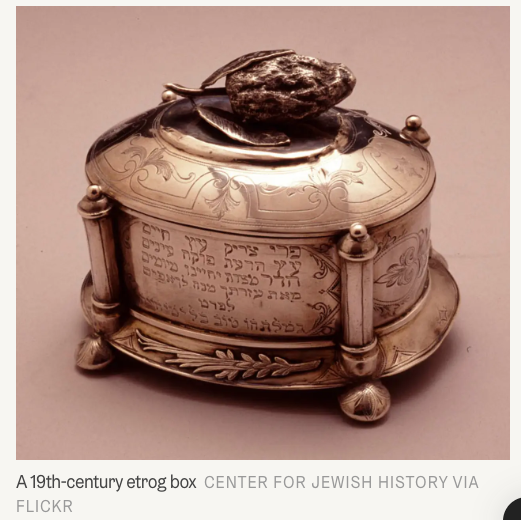Happy Birthday, Oldest President Ever! (and what Ecclesiastes has to say about it)
For the first time ever, (God willing), on November 20 the US will have an 80-year-old president. And everyone but President Biden seems to be feeling an almost Y2K-level dread. The question on people's minds: Are we better off with an 80-year-old president or one half that age? Of course, no one should generalize about these matters - every individual ages differently. But the question is one that is very relevant this week of Sukkot, as Jews around the world read the book of Ecclesiastes (Kohelet).
A couple of years ago I read a provocative article on the subject by Arthur Brooks in the Atlantic, entitled, "Your Professional Decline Is Coming (Much) Sooner Than You Think." You can read it here.
Brooks writes that according to research by Dean Keith Simonton, a professor emeritus of psychology at UC Davis, success and productivity increase for the first 20 years after the inception of a career, on average. So if you start a career in earnest at 30, expect to do your best work around 50 and go into decline soon after that.
Decline soon after 50? Oy.
He adds: "Much of literary achievement follows a similar pattern....Poets peak in their early 40s. Novelists generally take a little longer. When Martin Hill Ortiz, a poet and novelist, collected data on New York Times fiction best sellers from 1960 to 2015, he found that authors were likeliest to reach the No. 1 spot in their 40s and 50s. Despite the famous productivity of a few novelists well into old age, Ortiz shows a steep drop-off in the chance of writing a best seller after the age of 70. (Some nonfiction writers-especially historians-peak later.)"
On the other hand, wisdom, according to Brooks, increases even as mental acuity falls. "There are many exceptions," he writes, "but the most profound insights tend to come from those in their 30s and early 40s. The best synthesizers and explainers of complicated ideas-that is, the best teachers-tend to be in their mid-60s or older, some of them well into their 80s." He cites a number of Buddhist and Hindu sources on wisdom to make that point.
Jewish sources concur with what he shares of Eastern religions - like this passage from the Talmud (Pirkei Avot 5:24), which, at a time when lifespans were compressed, the aged were respected for their life experience.
He [Yehudah ben Tema] used to say: The five-year-old is for [learning] Scripture; the ten-year-old is [of age] for the Mishnah; the thirteen-year-old, for [the obligation of] the mitzvoth; the fifteen-year-old, for [the study of] the Talmud; the eighteen-year-old for the wedding canopy; the man of twenty is to pursue [a livelihood]; that man of thirty [has attained] to full strength; the man of forty to understanding; the man of fifty is to give counsel; the man of sixty [has attained to] old age; the man of seventy to venerable old age; the man of eighty, to [the old age] of strength; the man of ninety [is of the age ] to go bent over; the man of a hundred is as though already dead and gone, removed from this world.
The book of Kohelet is the product of an entire genre of biblical and post biblical material known as "Wisdom Literature." For its author, the specter of death colors all of life. Death for Kohelet is contradictory, to be both welcomed and feared; but as one ages, death's proximity vastly increases wisdom. Kohelet adopts the perspective that youth is wasted on the young, on those who have not yet learned to appreciate those fleeting moments of peak strength. | 













No comments:
Post a Comment